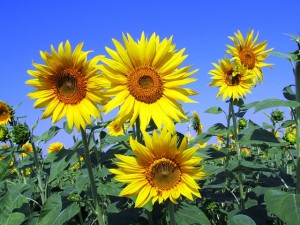There’s a reason that nearly 90% of real estate agents encourage homeowners to invest in landscaping prior to selling: studies show that a well-landscaped yard can add up to 28% to your home’s overall value.
Luckily, landscape enthusiasts and those looking to sell their homes now have a new way to plan their exterior design ideas: with the help of apps.
When the snow on a lawn begins to melt and as the daytime temperature reaches between 30°F and 45°F, snow mold can begin to spread rapidly. Conditions worsen in areas where moisture is abundant, such as protected, shady, depressed areas. In the future, tech-based landscaping apps could be able to give snow mold updates in real-time, enabling homeowners, landscapers, gardeners, and the like to make essential decisions on the fly.
DIY gardening and landscaping smartphone apps such as Garden Designer, Garden Plan Pro, Perennial Match, and Design Your Surroundings are quickly growing in popularity, according to The Associated Press.
“We’ve seen an increase in virtual interior design services within the last two years, so it’s only natural that this functionality would make its way to the exterior of the home as well,” said Stephanie Sisco, Real Simple magazine’s home editor.
Traditional landscape design involved a lot of measuring, logistics, and usually, consultations with professionals. Now, anyone who can use a smartphone can plan landscaping and gardening projects for their yards.
“We have seen several hundred thousand downloads…Arranging plants using a touch screen is way easier than using your lower back to do it,” said Patrick Pozzuto, founder of the iScape gardening app.
Despite the fact that an estimated 67% of landscaping projects in the U.S. involve single family residential homes, gardening apps targeted toward homeowners are relatively new to hit the market. But contractors have been using them for quite some time. That’s why Pozzuto warns that they may cause some trouble for those who aren’t entirely gardening experts.
While the pros have been using apps for a long time now, home gardeners do encounter some hiccups sometimes,” he said. “They don’t necessarily know what plant goes with what, and what areas it’ll grow in. And some people don’t have an artistic mind, and get into trouble.”
Jacksonville, Texas-based National Gardening Association executive director Dave Whitinger seems to share similar sentiments, commenting on users’ varying levels of tech-savviness.
“The reality is that while the virtual tools are great for a minority of gardeners, many more people find them far too confusing, and they get really frustrated,” he said.
For those who are interested in putting their green thumbs to the test, Whitinger recommends using other online resources such as Garden.org, which offers a gardening database of the whole country, complete with the frost dates for each area and a list of which plants attract which insects. Another great resource is Fertilizer for Less, which offers product reviews and DIY guides for home gardeners.
“Knowledge like that is crucial to whether a person’s gardening project succeeds,” he said. “Lettuce and spinach and tomatoes all have different dates when they should be planted for best results, and planting dates vary depending on where you live. Just because you see the plants for sale in the nursery doesn’t mean it’s the right time to plant.”








